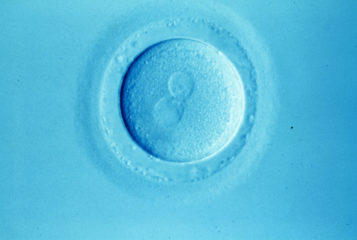You may have come across the story. 'Teenagers more likely to pass on genetic mutations to children,' reported The Independent. 'Teenage boys more likely to father child with birth defect due to mutating sperm,' declared The Metro. The Mail on Sunday was even prepared to put a figure on it: 'Teenage boys’ babies are 30 percent more likely to develop autism, schizophrenia and spina bifida.'
But was there research showing anything of the sort? The simple answer is no.
The story came from a research paper published in The Proceedings of the Royal Society B (see BioNews 791) in which researchers analysed DNA from 24,000 parents and their offspring. Looking at DNA microsatellites, they counted the number of mutations arising in these stretches of DNA during the production of either the sperm or the egg.
What they found was that, at all ages, the rate of these mutations was around six times higher in sperm than in eggs, suggesting that, even just after puberty, sperm cells have gone through more cell divisions than eggs.
But the researchers took their findings further by suggesting that their results showed that teenage fathers pass on more mutations to their offspring than older fathers and that therefore these children are more likely to be born with birth defects. And it was this claim that made it into the press.
The authors came to this conclusion because the rate of mutation was numerically higher in men aged 15 to 19.9 years than in the 20 to 24.9 year age group. However, the authors’ statistical analysis would seem to indicate that the rate of mutation does not significantly differ between the two age groups. This would hardly be surprising given that, out of the study of 24,000 parents, only 401 mutations were detected and, of these, only 23 were definitively assigned to paternal origin in the teenaged group.
Furthermore, one point that is critical to understanding the research - and that has been completely missed in the press - is that the type of mutations the researchers looked at are in non-coding regions of the genome, and are likely to be completely harmless. The reason that the researchers chose to study these types of mutations is that they only arise during cell division. Therefore, by examining their frequency, the researchers could estimate the number of cell divisions that have taken place.
Indirectly, an implication is that sperm cells will accumulate a higher number of harmful point mutations than eggs, simply because they undergo more cell divisions, allowing an opportunity for errors to occur. However, the present research provides nothing to quantify the risk of harmful point mutations occurring in teenage boys.
'The press seems to have completely misunderstood and actually missed the point of the study,' Dr David Miller from the University of Leeds told BioNews.
'The surprise was that the expected higher mutation rate in sperm is observed almost as soon as men begin producing sperm as teenagers not that teenagers are more likely to father children with more DNA mutations than older men as the headlines seem to be suggesting.'
Another odd thing about the paper is that the researchers set out in their methods that they are going to do a linear regression. But then in the results, they say they are choosing to ignore it because it doesn’t suit their hypothesis that younger fathers have children with more birth defects. But other than this being a not entirely scientific method for a scientific paper, their hypothesis itself is flawed.
The data on whether children of teenage fathers are more likely to have birth defects are less clear cut than the authors make out. There are relatively few studies on this association and they struggle to fully account for confounding factors. These include the fact that teenage fathers are more likely to smoke, drink and take drugs, be of lower socioeconomic status, and the mothers of their children are less likely to access medical care during pregnancy.
Furthermore, in studies that have detected a higher rate of birth defects or complications in the children of teenage fathers, the magnitude of this effect has been much lower than the authors suggest. For example, a US study referenced by the authors found a 3 percent higher risk of birth defects in the children of men aged under 20 years compared with children born to men aged 25 to 29.
Although the journalists who reported the story are not blameless - only one, Hannah Devlin at The Guardian, looked beyond the press release - the authors, by trying to shape their results to suit their hypothesis and their institution, by releasing a frankly appalling press release (laden with hanging comparisons and featuring several insupportable claims), have a lot to answer for.
The really odd thing about this research and its inaccurate portrayal in the press is that the findings themselves are actually quite interesting — something confirmed by both researchers in the field that I spoke to, Dr Miller and Professor Allan Pacey at the University of Sheffield. What a shame that by repackaging the findings to appeal to the mainstream press the true relevance of this research has been overlooked.





Leave a Reply
You must be logged in to post a comment.